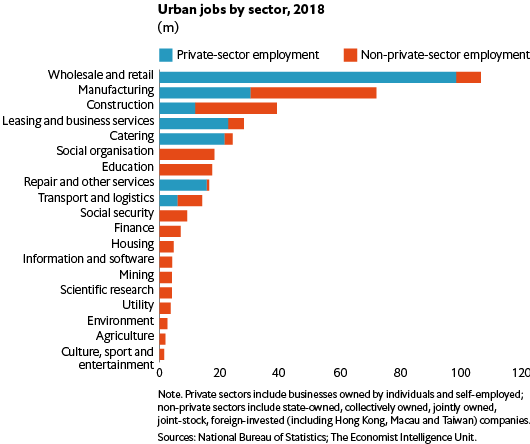Unemployment in China
Roughly 5 million people in China lost their jobs amid the outbreak of the new coronavirus in the first two months of 2020. It was in February when the unemployment rate jumps to 6.2%, the highest on record, according to the National Bureau of Statistics.
Retail sales of consumer goods dropped 20.5% year on year in January and February. Online sales of physical consumer goods increased 3%, accounting for about a fifth of overall retail sales. Industrial production fell 13.5%, while fixed-asset investment fell 24.5% over the same period.


The structure of the Chinese economy provides some buffer to the labour market. State-owned enterprises (SOEs) and public-sector employers will retain workers rather than lay them off, although employees may have to accept salary cuts or delayed wage payments. Joint-stock firms, often large in scale, also tend to retain workers at the cost of profit. This is considered a public relations gesture, and will often pay off in securing government projects or favourable policies later on.
By contrast, the private sector, which provides more than half of urban jobs, has seen widespread lay-offs, especially in retail, catering and other consumer-facing services. These occupations necessitate mass gatherings or direct physical contact, which were prohibited since the height of the epidemic.
Comparing to U.S
It wasn't very surprising to see that the U.S and China were suffering from the same pattern of unemployment since the breakout of COVID-19. This is majorly due to the fact that China is the second-largest economy.
